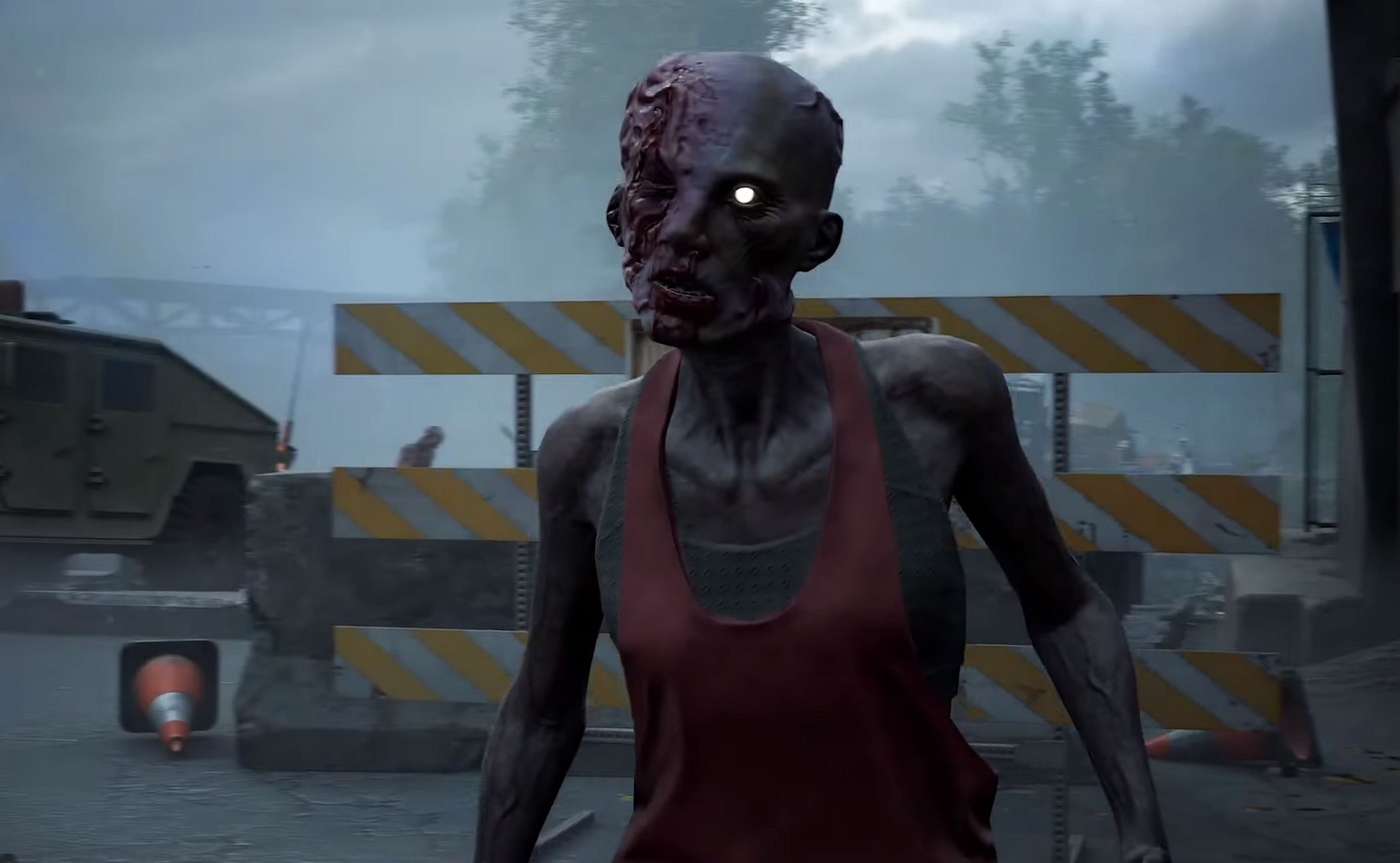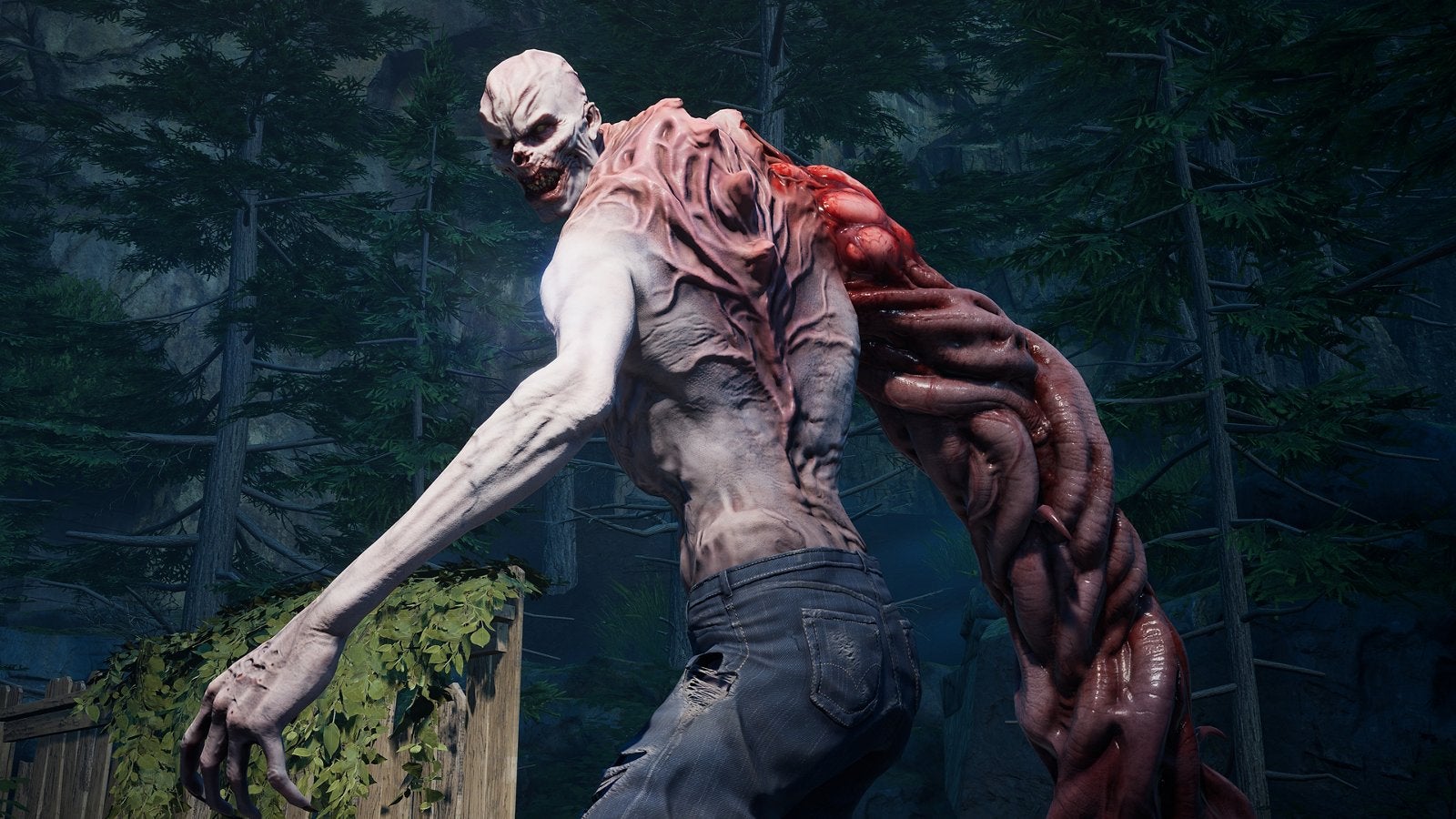In the lead-up to the launch of Back 4 Blood, the new game from the people who co-created the subgenre, I went back to re-experience Left 4 Dead. I wasn’t impressed. Left 4 Dead is still fun, but in sort of the same way a PS2 game can be: pretty engaging for an hour or two before you realise how hard it is to give up years of design, visual and production value progress for a nostalgia kick. Back 4 Blood is and isn’t the Left 4 Dead successor you were hoping for. It’s the most modern interpretation of those tenets, but it’s also a game coming out in 2021 - mindful of as many of our modern expectations as it can without ruining the flow. Back 4 Blood’s gameplay flow is fundamentally different from its predecessors. It’s a zombie shooter balanced around stop-and-pop action, one that encourages identifying and dealing with threats at range. The level design, enemy variations, and encounters all embrace that. Almost all of the game’s areas open up to reveal a big, wide-open section where you’re encouraged to explore the different paths, look for hidden loot, and survey as much of the objective as you can before you trigger the big horde. There’s a compelling variety of environments, all seemingly modelled after cliche Americana – the diner, the loud greasy bar, the brick homes near downtown, the suburbs, the small town church, the foggy woods – it’s all there. Scattered around those levels, another critical component of Back 4 Blood comes to the fore. This is a game with a fairly long list of weapons, split across the usual categories. Weapons come in different rarities, and their attachments are randomised. You’re constantly on the hunt for a more powerful version of your chosen firearm, or something radical enough that’ll get you to drop what you have for it. Maybe you find the SMG you like but it inexplicably has a long-range scope. Maybe the shotgun’s reload speed is slower than you’d want it. Or maybe, this purple M1 rifle is so good you decide to be your team’s point man and embrace the long-distance lifestyle. You’re never not looking for something in Back 4 Blood’s levels, and weapons are only one part of that. The locations of the various rooms and stashes, too, are randomised. Some require special tools to open, others will trigger an alarm if you open them, and a few are easy to access but don’t always hide something interesting. The more difficult a room is to access, the more likely it’s going to have valuable loot. Usually, you’re on the hunt for different attachments for your weapons, which have the potential to change how they play, particularly if they’re higher up on the rarity ladder. You also come across ammo, grenades and one-time use items like propane tanks and such. Before you leave the saferoom, there’s essentially a buying phase where you mull over what to spend your Copper on. Copper, a currency found across the levels and earned at the end of each section, can be spent on weapon attachments, the weapons themselves, grenades, ammo, and team-wide upgrades that boost the effectiveness of your various bits of kit, or up the number of them you can carry. Back 4 Blood doesn’t have a lot of quiet moments, but this is one of its more pronounced. With a coordinated squad, we were pooling our excess Copper to get one more team upgrade, heal up a teammate in need, or buy someone the scope they’ve been struggling without. I imagine Turtle Rock didn’t want to make the process of swapping attachments too fiddly or time-consuming, but not being able to unequip any of them until something else takes that slot is a missed opportunity. Ridden me this A lot of Back 4 Blood’s moment-to-moment action revolves around spotting danger at a distance, and scrambling to come up with an efficient way to deal with it. This is not a run-and-gun shooter where you take whatever is thrown at you as you book it at Mach 2. This is where the design of the game’s zombies – called Ridden – really comes in to make encounters memorable and varied. Every special zombie has a couple of different variations, which the game throws at you randomly in the form of Corruption Cards (modifiers). These variants share similar looks, but each essentially serves a different function. Crucially, the location of their weak points varies so you’re not always relying on a golden strategy to deal with them. For instance, the Tallboy is a towering monstrosity with an unnaturally long arm that you really don’t want to hit you. The standard version is slow, but its weak spot is tricky to hit because it’s only visible on one side. There’s another variant that’s much faster and will ram into the closest player, but has an easier weak spot to hit. The game director dictates the different combinations of variants you run into, and things could veer into the unfair on difficulties higher than Recruit. There doesn’t seem to be anything stopping the director from really trying to ruin your run, and I feel a balancing hand is needed to prevent certain situations from dissolving to bad luck. In general, the frequency of special zombies spawn is also another area Back 4 Blood needs to get under control. It’s not exciting to run into three in a row and again a few minutes deeper into the level. This is something Turtle Rock has already addressed, but I’ve yet to play after the hotfix’s release. Sometimes it comes down to simply not having enough ammo to deal with all of it, and since there’s no way to avoid the majority of these fights, the game tends to force you into a corner seemingly unnecessarily. Cards against normality Back 4 Blood’s claim to fame is its cards and deck building system. It’s almost disingenuous to call it that because this isn’t really what comes to mind when you think of deck building. Decks in Back 4 Blood are more like an arranged set of perks, rather than a pool of bonuses the game randomly picks from. The system can initially come across cluttered, but you quickly get the hang of what it wants you to do. Cards are pulled in the way you arranged them, so picking their order is key. You get to play your cards at every saferoom, and this always happens after you’re shown the Corruption Cards the director is going to play against you, so you have some chance to respond. These modifiers can change everything from the time of day of a level, to adding fog, spawning certain zombie variants, upping the number of trapped doors, and even dropping certain Tank-like bosses at some point in the level. You can tell that some of these enemies are designed to take advantage of certain player weaknesses, or punish tendencies. There’s a zombie that explodes when shot in the head, creating chaos for players who like to be accurate. I’ve had to go for body shots specifically when dealing with them. This is only one small example of the different situations the game wants you to adapt to. My group and I ran into the particularly difficult combination of Sleepers – Hunter-like enemies that stick to walls and bounce on you, and thick fog. It took us three times longer to navigate that level because everyone had to be extra cautious. Cleaner demeanour The Cleaners form Back 4 Blood’s final pillar. Their characters and personal sensibilities shine through in their dialogue, and in how they react to the different situations you find yourself into. Many of them are cliches, sure, but they play their parts well and add variety to incidental dialogue. Cleaners are also a crucial gameplay element, because they’re essentially classes in all but name. Every Cleaner has unique abilities that help them and some that affect the entire group. A lot of those are standard, but nevertheless welcome bonuses. Ammo capacity increase, better healing efficiency, the ability to spot special zombies from a distance and similar boons is what you’re looking at. I have yet to see one whose abilities are dispensable. The play style you’re going for, and the makeup of the rest of your squad will ultimately be what decides which of them to pick. You can take this a step further by building a deck around the strengths of each of them. You can tell the game is nudging you to turn Doc into a healer-style class, and Holly into a life leech baseball bat melee fiend. Spend enough time playing and you’ll unlock more cards that really make specialising more rewarding. Even if it didn’t launch on Game Pass, Back 4 Blood would be an easy recommendation. In an age where every co-op shooter needs an exhausting list of progression systems, reward tracks and limited-time events to keep players hooked, it’s surprising to see a co-op game nail its core goals so well without looking like another Destiny clone. Back 4 Blood takes an old-school approach where it makes sense, and modernises where it doesn’t. It’s heartening to be engaged by a game purely for its gameplay and variety, and not to pad out a progress bar somewhere. Disclaimer: PC Windows 10 version tested, code provided by publisher. Also available on Xbox One, Xbox Series X|S, PS4, and PS5.

